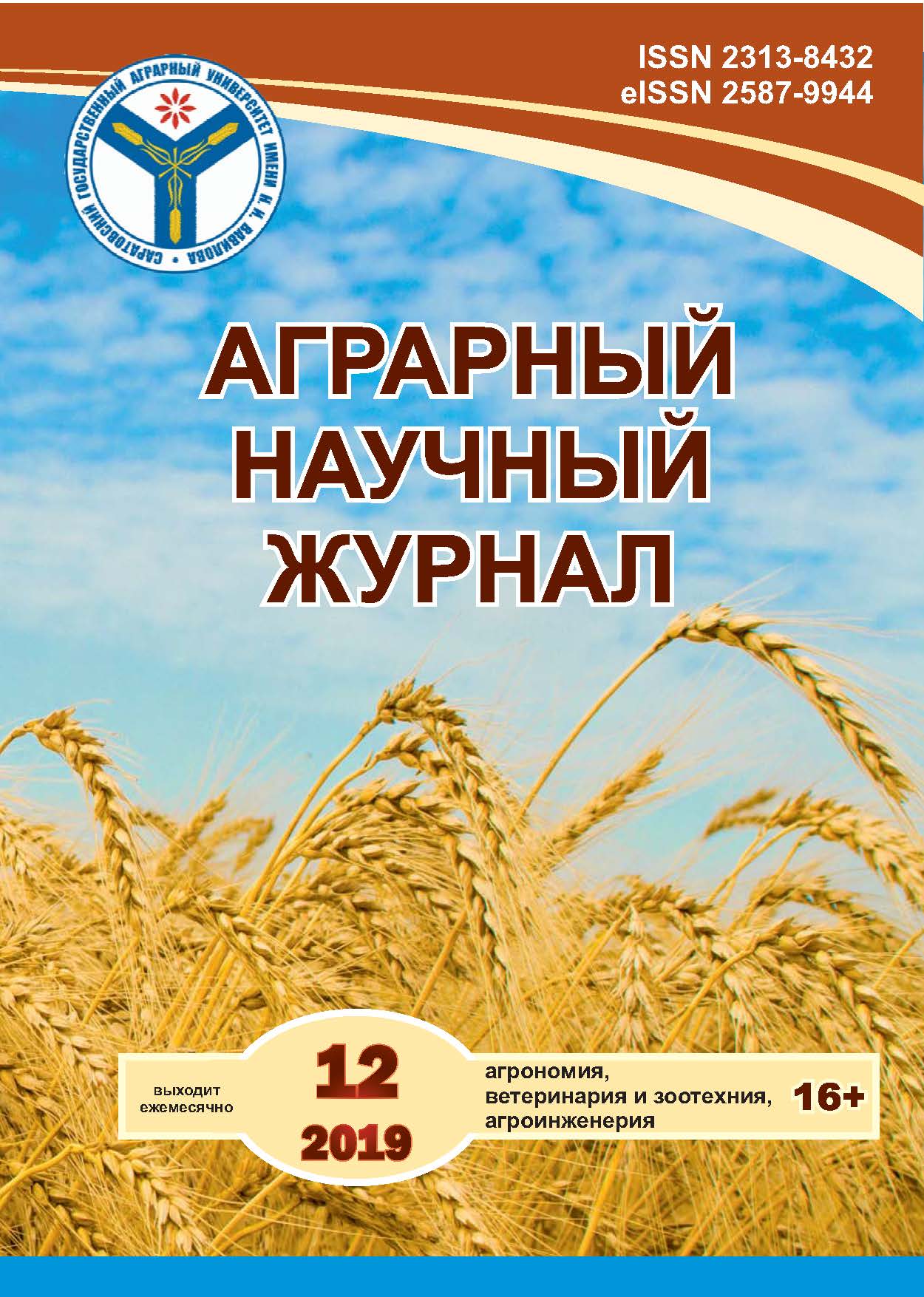The study of morphophysiological and economically valuable traits and properties of variety samples of grain sorghum
DOI:
https://doi.org/10.28983/asj.y2019i12pp34-41Keywords:
selection, grain sorghum, variety sample, protein, productivityAbstract
The results of studying 32 variety samples and lines of grain sorghum are presented, as well as experimental data on the genotypes of vegetative and generative traits, and the biochemical composition of grain. When considering the elements of the structure of the grain sorghum crop, we proceeded from the understanding that the yield is directly dependent on the number of grains per 1 m2 and their mass of 1000 grains. Since the plant standing density was the same for all the studied samples, genotypes with a large mass of grains of 1 plant were noted (k-3568, k-3867, k-3900, k-3904, k-8926), which depends on the number of productive stems per plant and weight of 1000 grains. The following cultivars are characterized by the largest mass of 1000 grains: k-3568, k-3900, k-3904, k-3911, k-3962, k-3967, k-3970, k-8926. The average weight of grains from 1 panicle varied in the range from 14.1 to 22.7 g, and the biological grain yield was 3.69 ... 6.19 t / ha (with a grain moisture content of 13%). The output of gross energy for cattle is from 3.99 to 6.69 energetic feed unit. Energy assessment and feed value are determined by the biochemical composition of the grain. In the experiment, variety specimens with high protein content were revealed: k-3902, k-3946, k-3959, k-3970. More than 4.0% of fat was detected in the grain of the variety samples: k-3867, k-3911, k-3957, k-3967, k-3970, k-3973.
Downloads
References
2. Влияние способа посева и нормы высева на продуктивность однолетних кормовых культур в аридной зоне Поволжья / В.Б. Нарушев [и др.] // Аграрный научный журнал. – 2012. – № 10. – С. 21–24.
3. ГОСТ 10842-89. Зерно зерновых и бобовых культур и семена масличных культур. Метод определения массы 1000 зерен или 1000 семян. – М.: Стандартинформ. 2009. – 4 с.
4. ГОСТ 10846-91. Зерно и продукты его переработки. Метод определения белка. – М.: Издательство стандартов. 1992. – 10 с.
5. ГОСТ 13496.15-97. Корма, комбикорма, комбикормовое сырье. Методы определения содержания сырого жира. – М.: Издательство стандартов. 1998. – 11с.
6. ГОСТ 26226-95. Корма, комбикорма, комбикормовое сырье. Методы определения сырой золы. – М.: Издательство стандартов. 1996. – 8с.
7. ГОСТ 13496.2-91. Корма, Комбикорма, комбикормовое сырье. Метод определения сырой клетчатки. – М.: Издательство стандартов. 1992. – 9с.
8. Доспехов Б.А. Методика полевого опыта (с основами статистической обработкой результатов исследований), 5-е изд., доп. и перераб. – М.: Агропромиздат, 1985. – 351 с.
9. Жужукин В.И., Николайченко Н.В. Современные подходы и нввые методы селекции при интродукции малораспространенных видов кормовых культур в засушливых условиях Нижневолжского региона //Аграрный научный журнал. – 2016. – № 9. – С. 39–42.
10. Кибальник О.П., Семин Д.С., Старчак В.И. Адаптивная способность коллекционных сортообразцов зернового сорго в условиях Поволжья // Аграрная наука. – 2016.–№ 3.–С. 6–8.
11. Методика государственного сортоиспытания сельскохозяйственных культур. – М.: Колос, 1971. – 239 с.
12. Методические указания по оценке качества и питательности кормов / Г.С. Сычев, В.В.Лепешкин. – М.: ЦИНАО, 2002. – 76 с
13. Методические указания по проведению опытов с кормовыми культурами / Всесоюзный НИИ кормов им. В.Р. Вильямса, 2-е изд. – М., 1987. – 198 с.
14. Томме М.Ф. Корма СССР. – М.: Издательство Колос, 1964. – 448 с.








